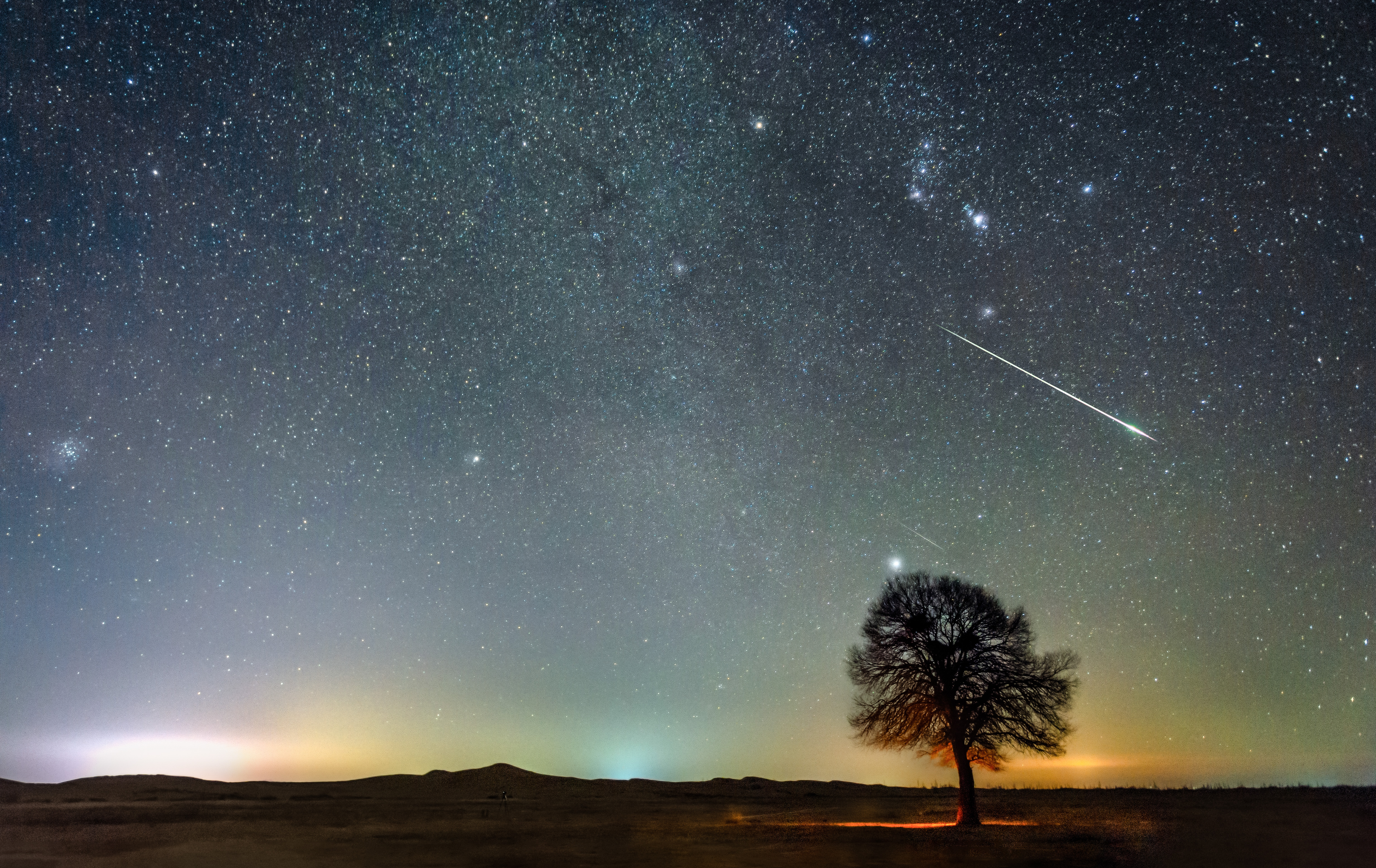Astrophotography in December 2023: what to shoot in the night sky this month
Everything you need to know about what’s happening in the night skies above this month

December is one of the best months of the year to do astrophotography from the northern hemisphere. With the longest night of the year coming up with 21 December’s solstice, there’s more time than ever for your hobby, but the night sky is also arguably at its best. The Orion Nebula (M42), the Pleiades (M45), the Double Cluster (NGC 869 and NGC 884) are just three of the sparkling jewels of the winter night sky north of the equator.
Add the year’s best display of ‘shooting stars’ and the rise of a full ‘Cold Moon’ on Boxing Day and December 2023 will surely bring some great opportunities to point your camera skywards.
Tuesday, December 5: Dark sky window opens
Today, it’s the Last Quarter (or Third Quarter) Moon, which sees our satellite half-lit from our point of view. Just as significantly, it rises after midnight and will rise around 50 minutes later each night for the next week. That opens December’s dark sky window, which will last for the next 10 nights or so until the post-sunset crescent moon gets plump.
Read: The best cameras for astrophotography
Saturday, 9 December: Moon-Venus conjunction
There are few more beautiful celestial sights to capture than the close conjunction of a delicate crescent moon and a bright planet. That will happen today, though it’s a pre-dawn sight so you must be organized and awake early. Look southeast an hour before sunrise and you’ll see a very slender crescent moon a few degrees from bright Venus, currently in its bright “Morning Star” apparition.
Read: When to photograph the moon
Monday, 11 December: Occultation Betelgeuse by asteroid 319 Leona
If you are in central Asia, southern Europe, Florida or Mexico, you could try for the brief sight of one of the most famous stars in the night sky blinking out for a few seconds. Betelgeuse, at the shoulder of Orion and rising in the southeast as darkness falls this m month, will be occulted by 319 Leona. It’s an infrequent and specific event, occurring at 8:17 p.m. EST, but there’s a chance there may be a ‘ring of fire’ around the asteroid. If you’re up for a challenge and some before/during/after imaging, head to this article on Sky & Telescope for the details.
Get the Digital Camera World Newsletter
The best camera deals, reviews, product advice, and unmissable photography news, direct to your inbox!
Wednesday, 13 December: Peak of the Geminid meteor shower

Astrophotographers and stargazers alike are obsessed with August’s Perseids simply because it occurs during the summer vacation season when temperatures above the equator are high. However, the best meteor shower of the year is the Geminids. The only such display to emanate from dust and debris left in the solar system by an asteroid, not a comet, the Geminids can produce 150 shooting stars on the peak night. What’s more, they can appear yellow, orange and even green. Since the shower’s radiant point, Gemini, is in the sky soon after it gets dark, this is a good meteor shower to photograph from 22:00 onwards, according to the American Meteor Society. Ready your wide-angle lens and tripod and put your camera outside for a few hours facing southeast – you might catch a falling star or two.
Read: How to photograph a meteor shower
Tuesday, 26 December: the rise of the full ‘Cold Moon’
The rising full moon each month is a staple of astrophotography, but you do need to be in the right place at the right time to catch it at its most impactful. That means moonrise, which will occur in the southeastern sky during dusk on Boxing Day this year. Check the time of moonrise where you are and be ready with a 70-300mm lens, a tripod, and a remote shutter release. Experiment with short exposures. A view low to the horizon is essential if you’re to catch the moment it rises as a muted orange orb.
Read: How to photograph the full moon
Wide-angle shot of the month: Orion rising

Go outside an hour after dark this month and you’ll see the famous constellation of Orion rising on its side due east. The belt stars – Alnitak, Alnilam and Mintaka – will appear vertically with bright red Beletegeuse on one side and bright blue Rigel on the other. The brightness of these stars and the way they rise together make it an excellent opportunity for a unique star trail, which is only possible at this time of year.
Use an online planetarium software like the Stellarium Web Online Star Map to pinpoint precisely when Orion will rise at your location. Be outside 20 minutes before and set up your camera on a tripod, using any lens you want. Turn the focus dial to infinity (∞) as a ballpark, but adjust your focus until you see sharp-looking stars on your camera’s LCD screen. Now, take shot after shot of the stars rising in the east (it’s easiest with an intervalometer or a shutter release cable you can lock) until Orion is high in the sky. An hour is enough. Then, put all your images into the free StarStaX software to create a star trail. Star trails classically show circles, but they don’t have to – and the stars of Orion shooting up from the horizon in a blaze of light provide a refreshing change.
Read more:
Astrophotography: How-to guides, tips and videos
Astrophotography tools: the best camera, lenses and gear
The best star tracker camera mounts
The best light pollution filters

Jamie has been writing about photography, astronomy, astro-tourism and astrophotography for over 15 years, producing content for Forbes, Space.com, Live Science, Techradar, T3, BBC Wildlife, Science Focus, Sky & Telescope, BBC Sky At Night, South China Morning Post, The Guardian, The Telegraph and Travel+Leisure.
As the editor for When Is The Next Eclipse, he has a wealth of experience, expertise and enthusiasm for astrophotography, from capturing the moon and meteor showers to solar and lunar eclipses.
He also brings a great deal of knowledge on action cameras, 360 cameras, AI cameras, camera backpacks, telescopes, gimbals, tripods and all manner of photography equipment.
